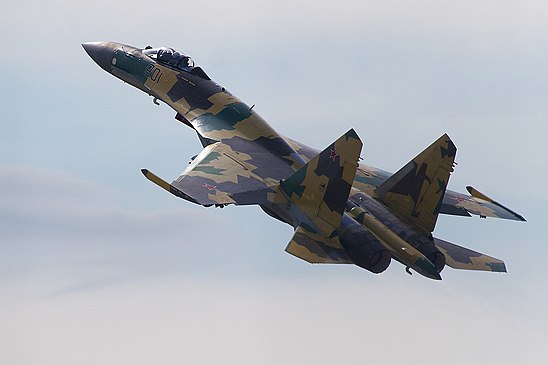Russia paid Iran with fighter jets and technology to receive ballistic missiles — ISW
This arms deal signifies a deepening strategic partnership between Tehran and Moscow as the two authoritarian regimes align.


US and European officials have reported that Iran has delivered hundreds of short-range ballistic missiles to Russia. This transfer is part of a deepening strategic partnership between Tehran and Moscow, with Russia reportedly offering fighter jets and technological support in exchange for the weapons, the ISW notes.
The move signifies dangerously increasing cooperation between Moscow and Tehran, followed by the previous Russia-North Korea alliance and growing Chinese assistance to the Russian war machine. Russia recently intensified missile and drone attacks against Ukraine, notably continuing to use Iranian-developed Shahed-131/136 drones and North Korean ballistic missiles.
According to anonymous US officials cited by the Wall Street Journal, Iran has supplied Russia with ballistic missiles to support the Russian invasion of Ukraine. This delivery fulfills a contract signed in December 2023 for Iranian Ababil close-range ballistic missiles and Fateh-360 short-range ballistic missiles.
In return for these weapons, Iran has reportedly pressed Russia for the delivery of Su-35 fighter jets. The acquisition of these advanced aircraft could significantly enhance Iran’s ability to project air power, given its current outdated and poorly maintained air fleet. Additionally, Iranian leaders have sought Russian support in upgrading their cyber capabilities and missile and space programs as part of the expanding military collaboration. Iran seeks to benefit economically and militarily from its expanding partnership with Russia. Iran has sought cash for its ailing economy in return for selling weapons to the Kremlin, as CTP-ISW reported in September 2023.
This arms deal highlights the growing alliance between Iran and Russia, which has intensified since Russia’s full-scale invasion of Ukraine in February 2022. Iran has been seeking economic benefits and military upgrades in exchange for supporting Russia’s war efforts.
The transfer of ballistic missiles is expected to bolster Russia’s capabilities in its ongoing attacks against Ukrainian infrastructure. Western officials fear that Russia will likely use these Iranian-provided missiles to target Ukrainian energy, military, and civilian infrastructure in the coming months, potentially destabilizing Ukrainian society and disrupting its defense industrial base.
In response to this development, the United States and unspecified European countries have reportedly prepared a sanctions package against Iran.
Other Key Takeaways from the ISW 7 September 2024 report:
- US Defense Secretary Lloyd Austin stated on 6 September that allowing Ukrainian forces to use US-provided weapons for long-range strikes against Russian military targets within Russia would not change the status of the war. His comments ignore how weapon systems and their accompanying rules of engagement do affect Ukrainian capabilities, and that changes in capabilities can change the course of wars.
- Ukraine’s Western partners pledged additional military aid to Ukraine during the Ukraine Defense Contact Group at Ramstein Airbase in Germany on 6 September, a significant portion of which will reportedly not be delivered in the immediate future.
- Russian forces are increasingly executing surrendering Ukrainian soldiers throughout the frontline likely in part because Russian commanders appear to be endorsing the proliferation of such war crimes.
- The Kremlin signaled its commitment to establish full control over the Russian information space in the future and will likely reattempt to deanonymize Russian social media and Telegram channels even though Roskomnadzor withdrew its recently proposed regulations for now.
- Open-source tracking of confirmed Russian military deaths in Ukraine suggests that more Russian volunteers have died in Ukraine than Russian convict recruits and mobilized personnel.
Related:
- None of Russia’s 67 Shahed drones managed to hit during overnight attack on Ukraine
- Lithuania allocates EUR 10 million for the production of the Ukrainian “Palianytsia” jet drones to facilitate attacks on Russian territory
- Drones attack ammo depot in Russia’s Voronezh Oblast, causing massive explosions
- Russia behind cyberattacks on Estonia, investigation finds
- Why did Ukraine reshuffle half its government amid war?
- US General Brown urges allies to support Ukraine’s military industry at Ramstein meeting in Germany
You could close this page. Or you could join our community and help us produce more materials like this.
We keep our reporting open and accessible to everyone because we believe in the power of free information. This is why our small, cost-effective team depends on the support of readers like you to bring deliver timely news, quality analysis, and on-the-ground reports about Russia's war against Ukraine and Ukraine's struggle to build a democratic society.
A little bit goes a long way: for as little as the cost of one cup of coffee a month, you can help build bridges between Ukraine and the rest of the world, plus become a co-creator and vote for topics we should cover next. Become a patron or see other ways to support.



